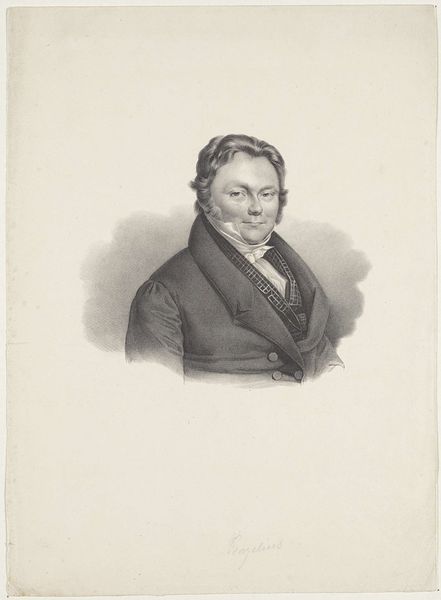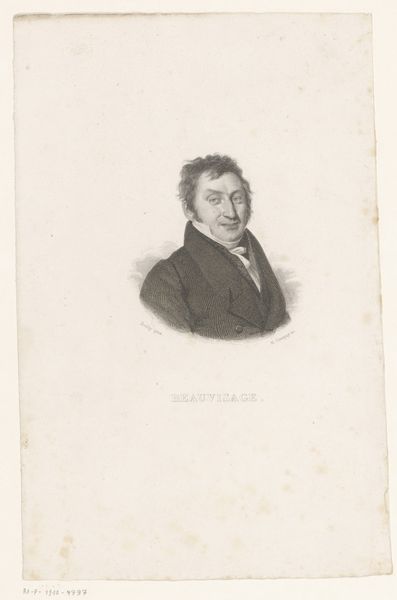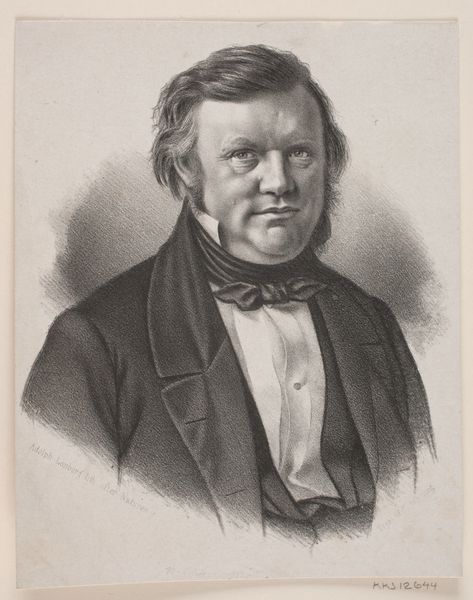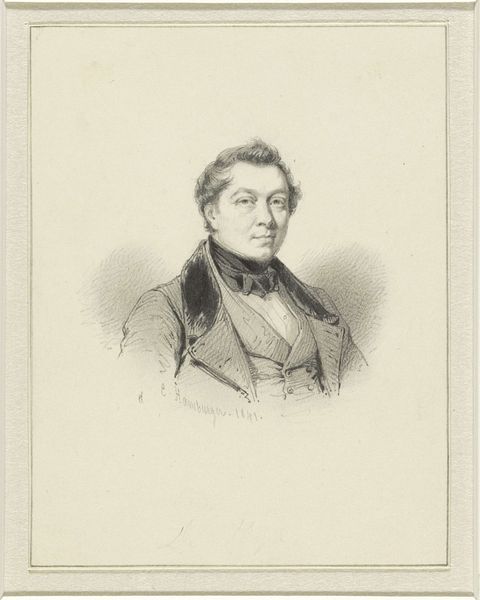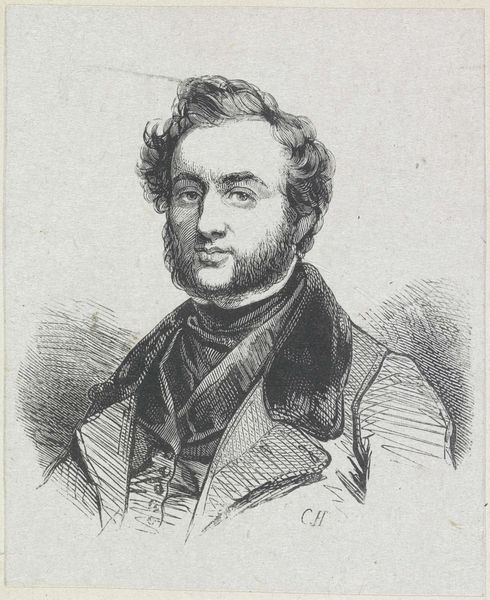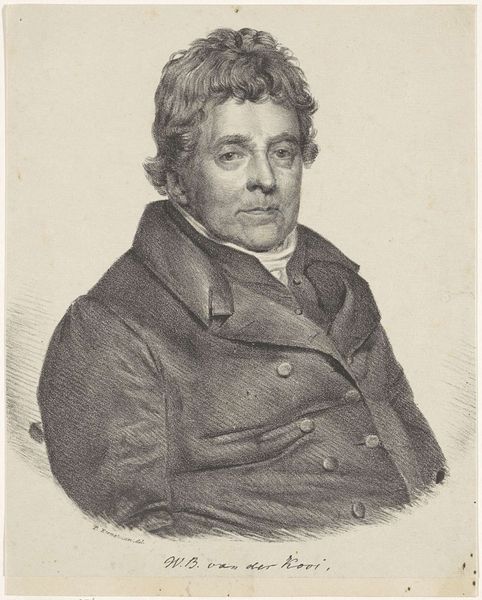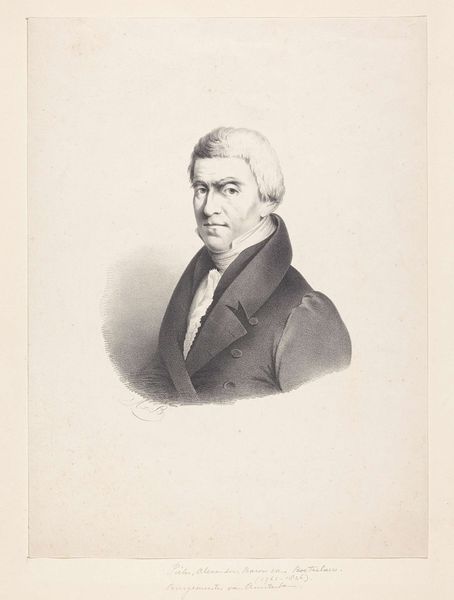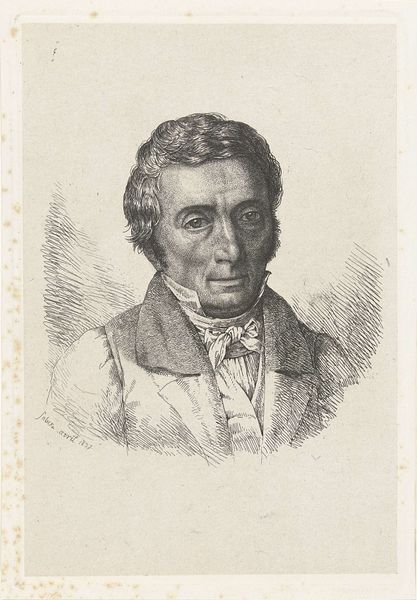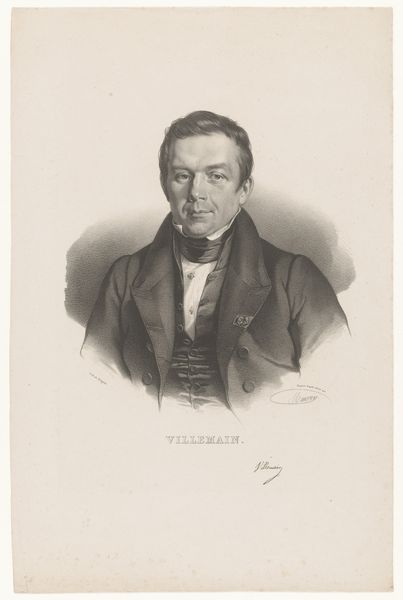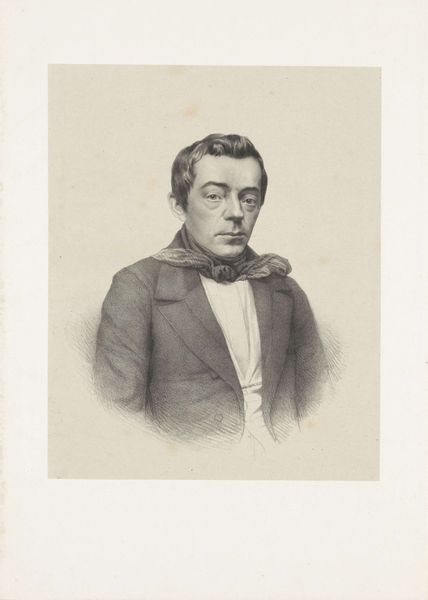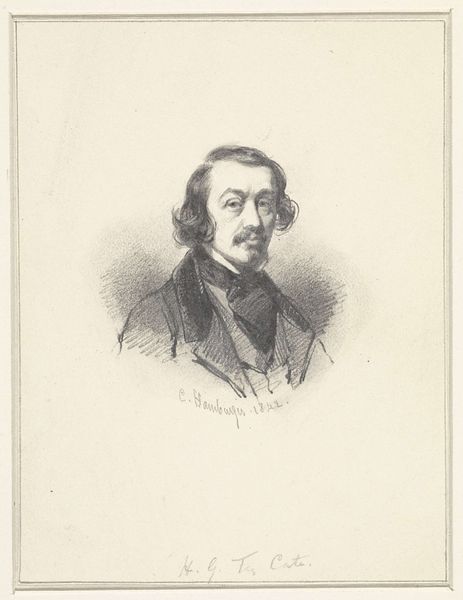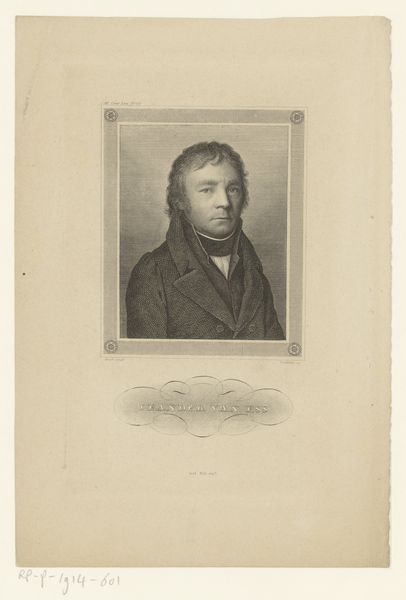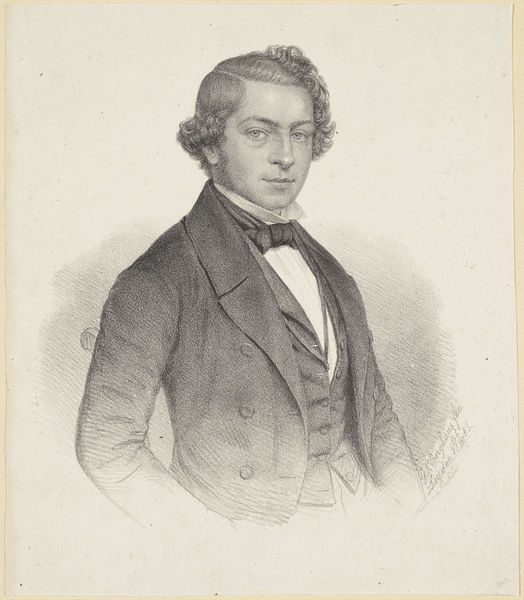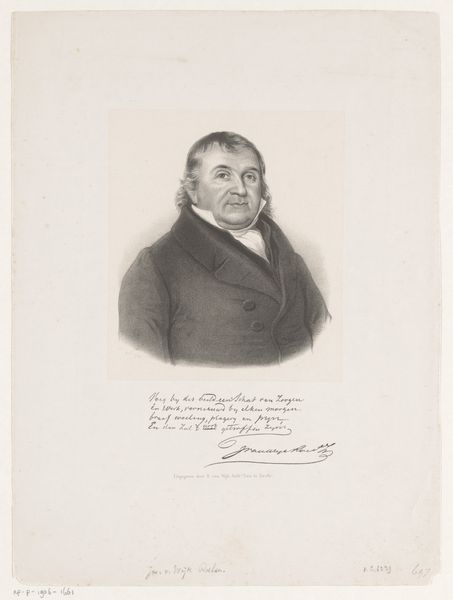
engraving
#
portrait
#
old engraving style
#
figuration
#
portrait reference
#
romanticism
#
portrait drawing
#
academic-art
#
engraving
Dimensions: height 380 mm, width 270 mm
Copyright: Rijks Museum: Open Domain
Curator: So, we’re standing in front of "Portret van M. A. L. Wichers," dating from somewhere between 1829 and 1853, residing here at the Rijksmuseum. It's an engraving, a method of printmaking, offering a fascinating insight into the way portraits circulated at the time. Editor: Instantly, I feel a sense of... stern observation. There's such formality. That stiff cravat must have been terrible to wear, a signifier, nonetheless, and I do feel the somber mood so well rendered here. Curator: Absolutely, the portrait oozes formality and it is clear that this technique speaks volumes about how imagery was reproduced and distributed. Engravings like this served both as artistic creations and a practical means for disseminating likenesses to a wider public. Who do you think M. A. L. Wichers was, judging from the work and from what you know about 19th-century Dutch society? Editor: He has that…slightly world-weary air of someone involved in public life, perhaps? And the very fact of the commission, of the engraving… well, there’s a certain status implied, isn’t there? He’s not just anyone. I feel like I should offer him a stiff drink or read him some poetry...or maybe both at the same time. Curator: Exactly! The lines are so precise, achieved, of course, through painstaking work. Consider the artist’s labor: the metal plate, the tools… These choices position the engraving, bridging the gap between craft and art, which might have social commentary implications based on which circle this artwork belonged to at the time it was produced. Editor: I see what you mean, especially thinking about value assigned at the time, also. There's such an undeniable... laboriousness, yes? The detail, the precision etched line by line into the copperplate is astounding. The crosshatching alone conveys depth and shadow, offering volume that speaks directly to the work. Thinking about materiality and social impact of labor adds depth. Curator: The networks, labor, and access really shaped how people perceived and consumed images back then. It’s rewarding to unravel those threads, isn't it? Editor: It is, I agree. There’s always a conversation embedded there between who we perceive to be in front of us, the real person versus what is implied of their personality based on material considerations surrounding production value, the context from when, and where they emerge. And perhaps the magic comes from the distance in between, as a space to dwell.
Comments
No comments
Be the first to comment and join the conversation on the ultimate creative platform.
